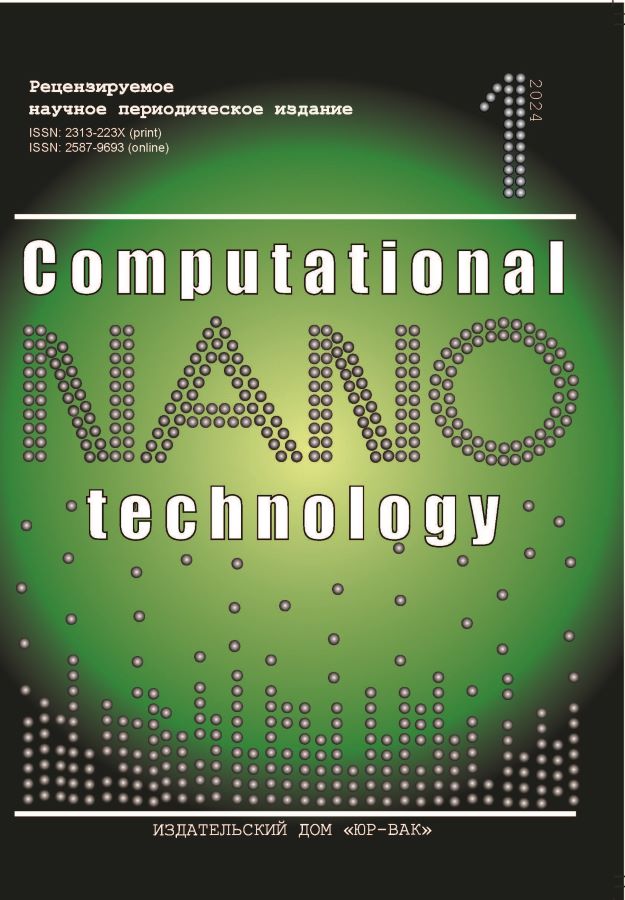Разработка модели визуальной одометрии на основе сенсоров и анализа видеопотока
- Авторы: Данилова С.Д.1
-
Учреждения:
- Финансовый университет при Правительстве Российской Федерации
- Выпуск: Том 11, № 1 (2024)
- Страницы: 36-47
- Раздел: МАТЕМАТИЧЕСКОЕ МОДЕЛИРОВАНИЕ, ЧИСЛЕННЫЕ МЕТОДЫ И КОМПЛЕКСЫ ПРОГРАММ
- URL: https://journals.eco-vector.com/2313-223X/article/view/631118
- ID: 631118
Цитировать
Полный текст
Аннотация
Статья посвящена разработке модели визуальной одометрии на основе сенсоров инерциального измерительного устройства и анализа видеопотока, поступающего в реальном времени. Моделирование выполнено на основе анализа и оценки методов измерений собственных координат движущегося объекта, систем оценки перемещения объекта в трехмерном пространстве, алгоритмов на промежуточных этапах обработки изображений, принципов выбора особых точек на кадре и оптического потока для выбранных точек.
Полный текст
Об авторах
Соелма Доржигушаевна Данилова
Финансовый университет при Правительстве Российской Федерации
Автор, ответственный за переписку.
Email: sddanilova@fa.ru
ORCID iD: 0000-0003-4143-078X
кандидат технических наук, доцент, доцент, кафедра анализа данных и машинного обучения, факультет информационных технологий и анализа больших данных
Россия, МоскваСписок литературы
- Bradski G., Kaehler A. Learning OpenCV: Computer vision with the OpenCV Library. O’Reilly Media, Inc., 2008. 580 p.
- Hartley R.I., Zisserman A. Multiple view geometry in computer vision. Second Edition. Cambridge, UK: Cambridge University Press, 2004. 655 p.
- Hamzah R.A., Ibrahim H., Hassan A.H.A. Stereo matching algorithm for 3D surface reconstruction based on triangulation principle // Information Technology, Information Systems and Electrical Engineering (ICITISEE), International Conference on. IEEE, 2016, Pp. 119–124.
- Бурдин П.А. Универсальный датчик инерциальной навигации на микроконтроллере. СПб., 2016.
- Вычисление оптического потока методом Лукаса–Канаде. Теория. URL: https://habr.com/ru/post/169055/ (дата обращения: 12.12.2023).
- Дерюгина Е.О., Борсук Н.А., Васина Е.В. Подход к реализации 3D-моделей эксклюзивных экспонатов музея по их фотографиям // Электромагнитные волны и электронные системы. 2019. Т. 24. № 7. С. 48–55. doi: 10.18127//j15604128-201907-08. EDN: YWGUGN.
- Кирнос В.П., Антипов В.А., Коковкина В.А. и др. Построение карты глубины с использованием камеры с широкоугольным объективом типа «рыбий глаз» // Радиотехника. 2020. Т. 84. № 2 (3). С. 64–71.
- Коковкина В.А., Антипов В.А., Кирнос В.П. и др. Обнаружение ориентиров по данным лазерной сканирующей системы на основе контурного анализа в задаче одновременной локализации и построения карты при движении автономного мобильного робота // Успехи современной радиоэлектроники. 2020. № 2. С. 22–29.
- Кочкаров А.А., Калинов И.А. Программный комплекс пространственной навигации и мониторинга на основе алгоритма визуальной одометрии. Тверь: НИИ «Центрпрограммсистем», 2016. С. 175–180.
- Любутин П.С. Анализ изображений в оптическом методе оценки деформации: дис. ... д-ра техн. наук: 05.13.01. Томск, 2021. 304 с.
- Михайлова С.С., Данилова С.Д., Гринева Н.В. Исследование методов автоматического сшивания панорамных изображений // Computational Nanotechnology. 2023. Т. 10. № 1. С. 36–48. doi: 10.33693/2313-223X-2023-10-1-36-48. EDN: QBMLXT.
- Основы стереозрения. URL: https://habr.com/ru/post/130300/ (дата обращения: 12.12.2023).
- Антипов В.А. Повышение точности позиционирования камеры в системе прикладного телевидения с использованием расширенного фильтра Калмана: дис. ... канд. техн. наук: 2.2.13. Ярославль, 2021. 129 с.
- Рабочий А.А. Визуальная одометрия в методах машинного контроля: бакалаврская работа. СПб., 2017, 28 с.
- Рощупкина С.Н., Моделирование рельефа местности по спутниковым снимкам: бакалаврская работа: 01.03.02. СПб., 2019. 36 с.
- Фурсов В.А., Минаев Е.Ю., Котов А.П. Технология визуальной одометрии по наблюдениям опорной поверхности с коррекцией оценок координат // Информационные технологии и нанотехнологии (ИТНТ-2021): cб. трудов по матер. VII Междунар. конф. и молодежной школы (Самара, 20–24 сентября 2021 г.). Т. 3. Самара: Самарский национальный исследовательский университет имени академика С.П. Королева, 2021. С. 33712. EDN: ACVQXF.
- Черских Е.О. Концептуальная модель онтологии сенсорной системы с событийным методом обработки информации // Сенсорные системы. 2022. Т. 36. № 2. С. 124–135. doi: 10.31857/S0235009222020020. EDN: TEGRFO.
Дополнительные файлы
















